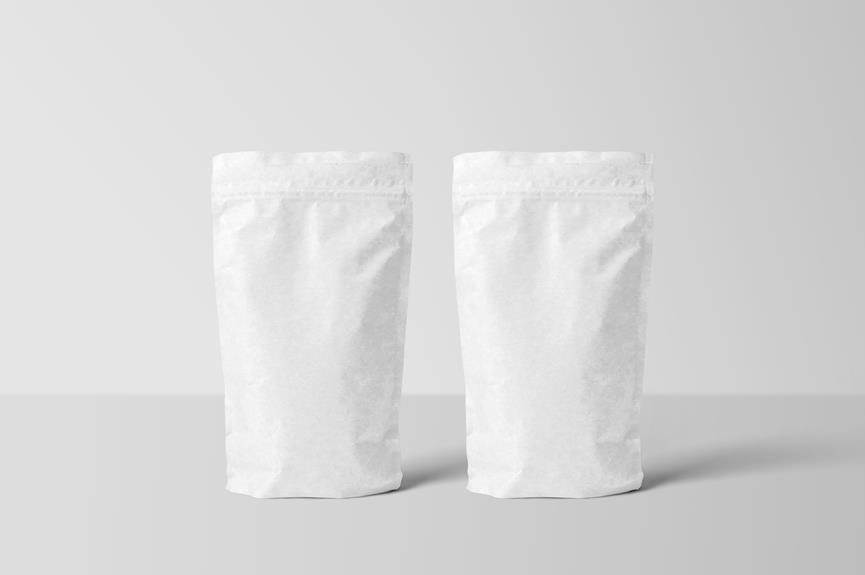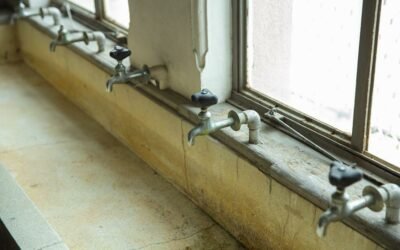Did you ever wonder if mold can grow in a vacuum-sealed bag? Well, the answer might surprise you.
In this article, we'll explore the factors that can affect mold growth in sealed bags, such as moisture and temperature.
By understanding these factors, you'll learn how to prevent mold growth in vacuum-sealed bags and keep your stored items safe and mold-free.
So, let's dive into the world of mold and sealed bags to uncover the truth.
Key Takeaways
- Vacuum sealing removes oxygen, but some rare types of molds can still grow in low-oxygen environments.
- Proper storage conditions, such as cool temperatures and low humidity, should be maintained to minimize the risk of mold growth.
- Moisture is crucial for mold growth, so items should be completely dry before sealing, and moisture-rich foods should have as much moisture removed as possible.
- Temperature also plays a role, as mold thrives in temperatures between 77°F and 86°F, and high temperatures combined with high humidity provide an ideal environment for mold to thrive.
Mold Growth in Vacuum Sealed Bags
When vacuum sealing food, you may wonder if mold can still grow in the sealed bag. Mold growth in vacuum sealed bags is a valid concern, as the presence of oxygen is a crucial factor for mold to thrive.
When foods are vacuum sealed, the air is removed, creating an environment with low oxygen levels. This reduction in oxygen inhibits the growth of most molds, as they require oxygen to survive and reproduce.
However, it's important to note that vacuum sealing doesn't completely eliminate the risk of mold growth. While most molds can't grow in low-oxygen conditions, there are some types, such as anaerobic molds, that can survive and grow in environments with limited or no oxygen. These molds are rare and typically not a concern for most food items.
Additionally, vacuum sealing doesn't eliminate the presence of mold spores. Mold spores, which are microscopic reproductive structures, can still be present on the surface of the food prior to vacuum sealing. If the food is already contaminated with mold spores, vacuum sealing won't prevent the growth of mold once the bag is opened.
To minimize the risk of mold growth in vacuum sealed bags, it's crucial to ensure that the food being sealed is fresh and free from any visible signs of mold or spoilage. Proper storage conditions, such as cool temperatures and low humidity, should also be maintained to further inhibit mold growth.
Factors Affecting Mold Growth in Sealed Bags
To minimize the risk of mold growth in vacuum sealed bags, you should be aware of several factors that can affect the growth of mold in sealed bags.
- Moisture: Mold requires moisture to grow, so it's crucial to ensure that the items being stored in sealed bags are completely dry. Even small amounts of moisture can create an environment suitable for mold growth.
- Temperature: Mold thrives in warm temperatures, typically between 77°F and 86°F (25°C and 30°C). Therefore, it's important to store vacuum sealed bags in a cool and dry place to minimize the chances of mold growth.
- Oxygen: While vacuum sealing removes oxygen from the bag, it's important to note that some molds can still grow in low oxygen environments. To further reduce the risk, consider using oxygen absorbers to eliminate any remaining oxygen.
- Food Content: If you're storing food items in vacuum sealed bags, it's crucial to ensure that they're properly cooked or dried before sealing. Moisture-rich foods are more prone to mold growth, so it's essential to remove as much moisture as possible before sealing.
The Role of Moisture in Mold Development
Moisture plays a crucial role in the development of mold in vacuum sealed bags. Mold requires three main factors for growth: moisture, suitable temperature, and organic material. Without the presence of moisture, mold spores remain dormant and are unable to grow. However, once moisture is introduced, mold spores can germinate and begin to grow, leading to the formation of visible mold colonies.
The table below illustrates the relationship between moisture levels and mold growth:
| Moisture Level | Mold Growth |
|---|---|
| High | Rapid and extensive growth |
| Moderate | Slow growth |
| Low | Limited growth |
| Very low | No visible growth |
As the table shows, higher moisture levels create ideal conditions for mold growth, while lower moisture levels restrict its development. In vacuum sealed bags, the absence of air and the tight seal prevent the entry of moisture from the surrounding environment. However, it is important to note that if any organic material with moisture content is present inside the bag, mold growth may still occur. Therefore, ensuring that the items being stored are completely dry before sealing them in vacuum bags is crucial in preventing mold development.
The Impact of Temperature on Mold Growth
To ensure the prevention of mold growth in vacuum sealed bags, it's important to consider the impact of temperature on mold development. Temperature plays a crucial role in mold growth, as it affects the rate at which mold spores germinate and multiply. Here are four key points to understand the impact of temperature on mold growth:
- Optimal temperature range: Mold thrives in temperatures between 77°F (25°C) and 86°F (30°C). Within this range, mold growth is accelerated, and colonies can quickly form.
- Temperature extremes: Mold growth is inhibited at both high and low temperatures. Extreme heat above 95°F (35°C) can kill mold spores, while temperatures below freezing can temporarily halt mold growth.
- Temperature fluctuations: Mold can withstand fluctuations in temperature to some extent. However, repeated fluctuations can create favorable conditions for mold growth. For example, storing vacuum sealed bags in a warm environment during the day and a cool environment at night can promote mold development.
- Relative humidity: Temperature and relative humidity are interconnected factors influencing mold growth. High temperatures combined with high humidity provide an ideal environment for mold to thrive.
Preventing Mold Growth in Vacuum Sealed Bags
To prevent mold growth in vacuum sealed bags, you should ensure proper storage conditions and take proactive measures. Mold requires moisture and organic matter to grow, so keeping your vacuum sealed bags dry and free from any potential food particles or residue is essential. Here are some steps you can take to prevent mold growth:
| Storage Conditions | Proactive Measures |
|---|---|
| Store in a cool, dry place | Use moisture absorbers |
| Avoid storing in areas prone to high humidity | Clean bags before sealing |
| Ensure bags are completely dry before sealing | Check bags periodically for signs of mold |
| Do not overfill bags | Use desiccant packs in the bags |
| Keep bags away from direct sunlight | Rotate stored items regularly |
Conclusion
In conclusion, mold growth in vacuum sealed bags is possible under certain conditions. Factors such as moisture and temperature play a crucial role in mold development.
The absence of oxygen in vacuum sealed bags doesn't necessarily prevent mold growth. Therefore, it's essential to ensure that the items being stored in vacuum sealed bags are thoroughly dried and free from any moisture content to minimize the risk of mold growth.
Additionally, maintaining appropriate temperature levels can further help in preventing mold growth in vacuum sealed bags.






0 Comments